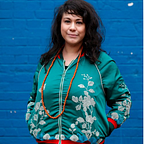Urban Mobility Apps vs Google Maps — How to make UrbanGo a “one-stop shop” for public transport users, at home and abroad
The urban mobility app has become a ubiquitous tool for the modern smartphone-using city dweller. Gone are the days of asking someone where the nearest bus stop is — mobile data and an urban mobility app will tell you how to get home and even order an Uber for you!
UrbanGo is a public transit and mapping application, not dissimilar to familiar competitor, Citymapper. UrbanGo works out all the possible routes on how to get from A to B, from the user’s current location to their desired destination, providing all public transport combinations and possibilities, as well as walking, cycling, and driving options. The app also contains a “hand-holding” feature, which alerts the user when they need to alight or transfer during their journey. Basically, UrbanGo makes any journey fool-proof, even for the most disoriented user.
This sounds really good on paper but UrbanGo report that their users remain frustrated with having to buy multiple tickets for different methods of public transport. This in turn subjects them to the often annoying and long-winded process of buying tickets, which as we all know, means long queues, machines that don’t work and not having the right cards or coins to pay, losing plastic cards, etc. These problems are exacerbated when users are abroad (and less familiar with local public transport systems), where pricing information and how to purchase tickets is less clear.
How can UrbanGo offer their users a solution that bypasses the need to buy physical tickets at stations and from different providers? How do we make UrbanGo a “one-stop shop” for public transport users on the go, even when they travel abroad?
Research conducted on public transport users based in Amsterdam and London, between the ages of 25–50, with experience using public transport abroad (namely Stockholm, Hong Kong, Oslo, Barcelona and Paris), yielded varying opinions and experiences. However, the following points were unanimous amongst all interviewees:
- users relied on, and were satisfied with, Google Maps for live journey information, no matter whether they were using public transport at home or abroad (and were not aware of, or interested in, an urban mobility app).
- users used a smart card that can be used contactlessly on all forms of transport and can be topped up in stations or online to use public transport facilities.
- users were most likely to experience issues travelling abroad, mostly due to unfamiliar ticket machines and complicated fare structures. One user even admitted that the system in Norway was so hard to decipher that she made a couple of illegal journeys!
- Registering for smart cards, especially abroad, can be tedious.
Infact, 100% of users used Google Maps and smart top-up cards for their journeys. This lead me to conclude that whilst the issues of obtaining journey and ticketing information abroad needed addressing, the larger problem here is that users were not compelled to use urban mobility apps at all.
So any proposed solution would have to be irresistible to even the most diehard Google Maps fan, and would have to possibly appeal to Mr. Google himself. Ideation yielded the following three key ideas:
- An in-app feature that allows you to purchase travel tickets when looking up your journey (no other app or machines necessary). The ticket (most likely containing a QR code), once purchased, can be saved in the phone wallet (or android equivalent) or even in the app.
- An in-app library of registered and usable smart cards (by city or country), allowing the user to top-up in the app.
- One singular (sexy) digital smart card that can be used globally in all cities for all methods of public transport. The card is scanned from the phone to allow entry through public transport barriers. It can be topped up in the app, using the user’s preferred payment method and can be topped up in multiple currencies. Journey information will advise if there is sufficient credit on the card to make the journey and if not, allows the user to instantly add funds within the app. The digital smart card will interface with public transport companies to find the best possible fares based on user information in the app.
Option 3 is clearly the winning solution. Users therefore would not need to consult any other app for journey information or to buy tickets, even when abroad. In fact, looking at Google Maps would be unintuitive, as an additional step involving another app or a machine at a station would be required.
On to prototyping!
From the client’s brief, I had anticipated different results to what the research presented, which ultimately meant that I was facing an altogether new problem — that the urban mobility map faces a hefty competitor. I learned a number of things in this exercise:
- Not all interviewees are equal. Some were very forthcoming with information, whilst others provided one word answers. So you need to be able to think of questions on the spot to coax the information out of the one-worders and learn to write quickly with the others…
- Hold off on making conclusions before doing the research — you never know what you might find out.
- Listen. The client may have identified a problem but the users ultimately experience whether there is a problem or not.
- Prototyping is fun!
